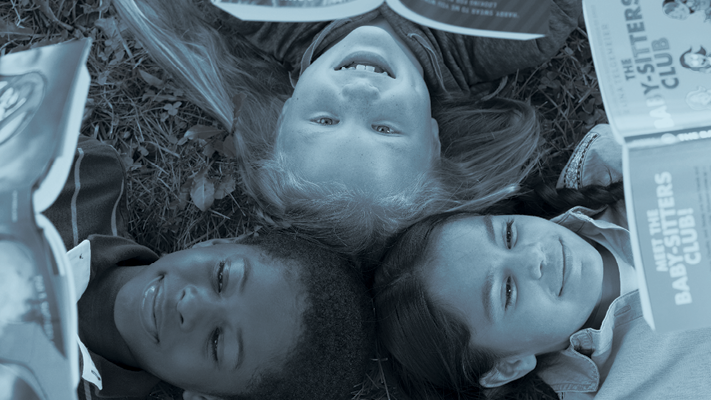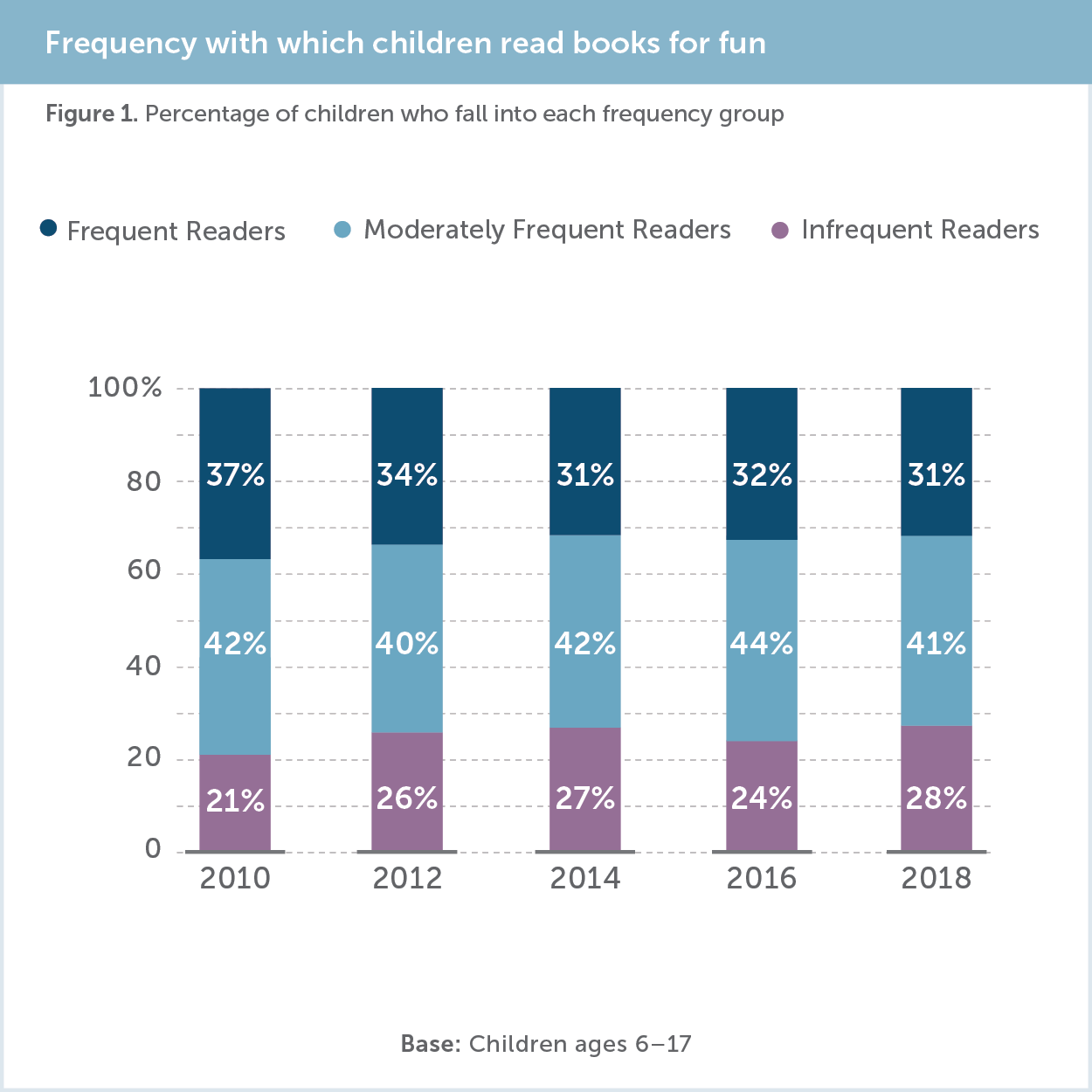
CHILDREN'S READING TRENDS REMAIN FAIRLY STEADY, BUT DISPLAY A DOWNWARD TREND AS KIDS GROW UP
Over seven editions, the Kids & Family Reading Report has explored the reading habits and behaviors of children ages 6–17. Since 2010, the benchmark for tracking data from this report, the year-over-year changes in children’s reading frequency have been minimal, with a consistent percentage of kids reading books for fun 1–4 days a week (moderately frequent readers). However, incremental changes have culminated in an overall decline of children reading nearly every day (frequent readers), and a rise in those reading less than 1 day a week (infrequent readers) (see Figure 1).
Click Here For High-Resolution Image
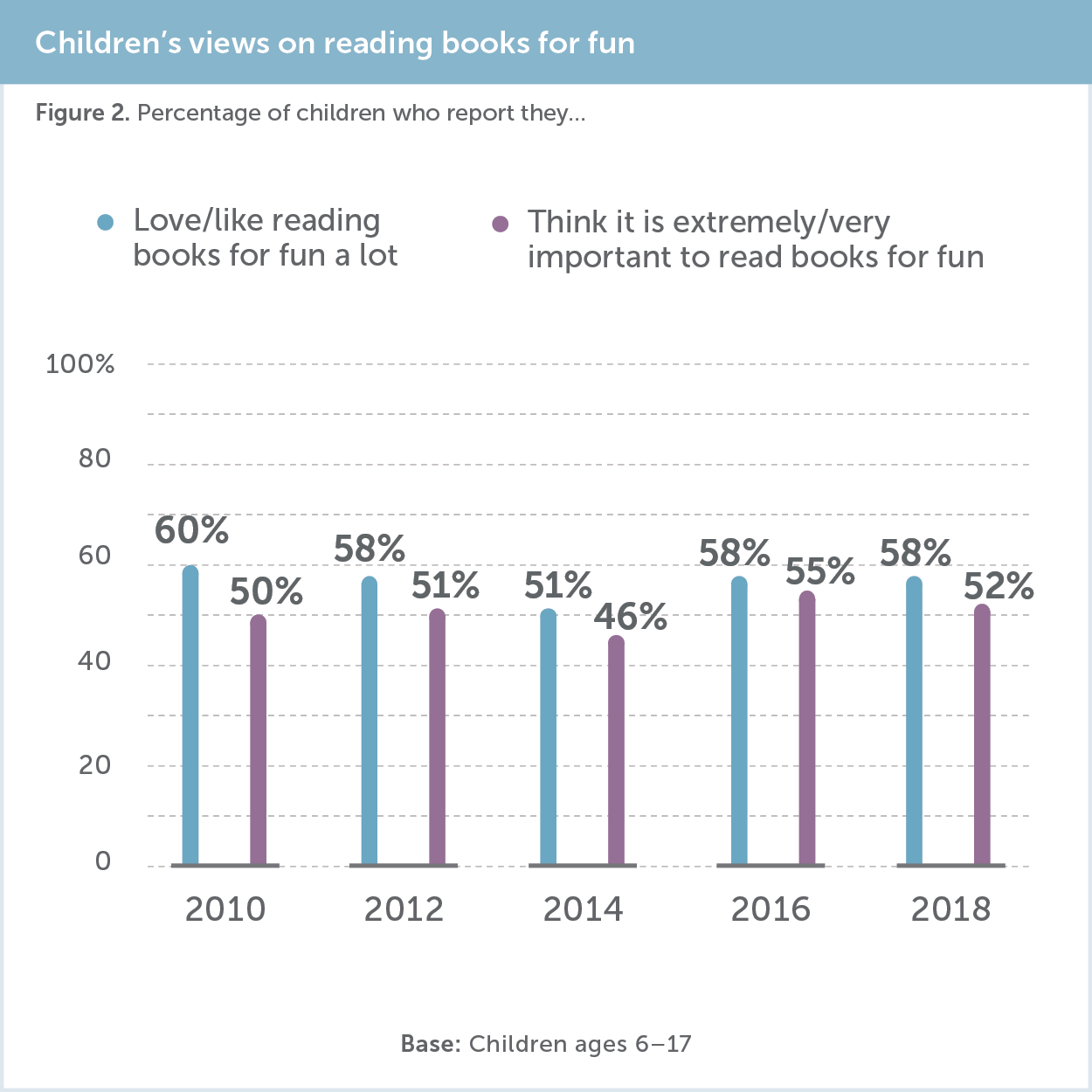
Kids’ views on reading enjoyment have largely held steady over the years with about six in 10 kids reporting they love or like reading books for fun a lot. This percentage dipped in 2014 but rebounded in 2016, and remains steady at 58% in 2018. Kids’ views on the importance of reading have also maintained consistency over time, hovering around 50% of children saying that reading books for fun is extremely or very important (see Figure 2).
Overall, trends we observed in years past continue to hold true: each edition of our report has found that as kids grow up, reading frequency, enjoyment and children’s sense of its importance decline. As one 16-year-old girl described it, “I really don't have time to read any books that I want. I liked it better when I was younger and could read whatever I wanted.”
Additionally, girls are more likely than boys to be frequent readers and they are more likely to have positive attitudes towards reading.
Click Here For High-Resolution Image
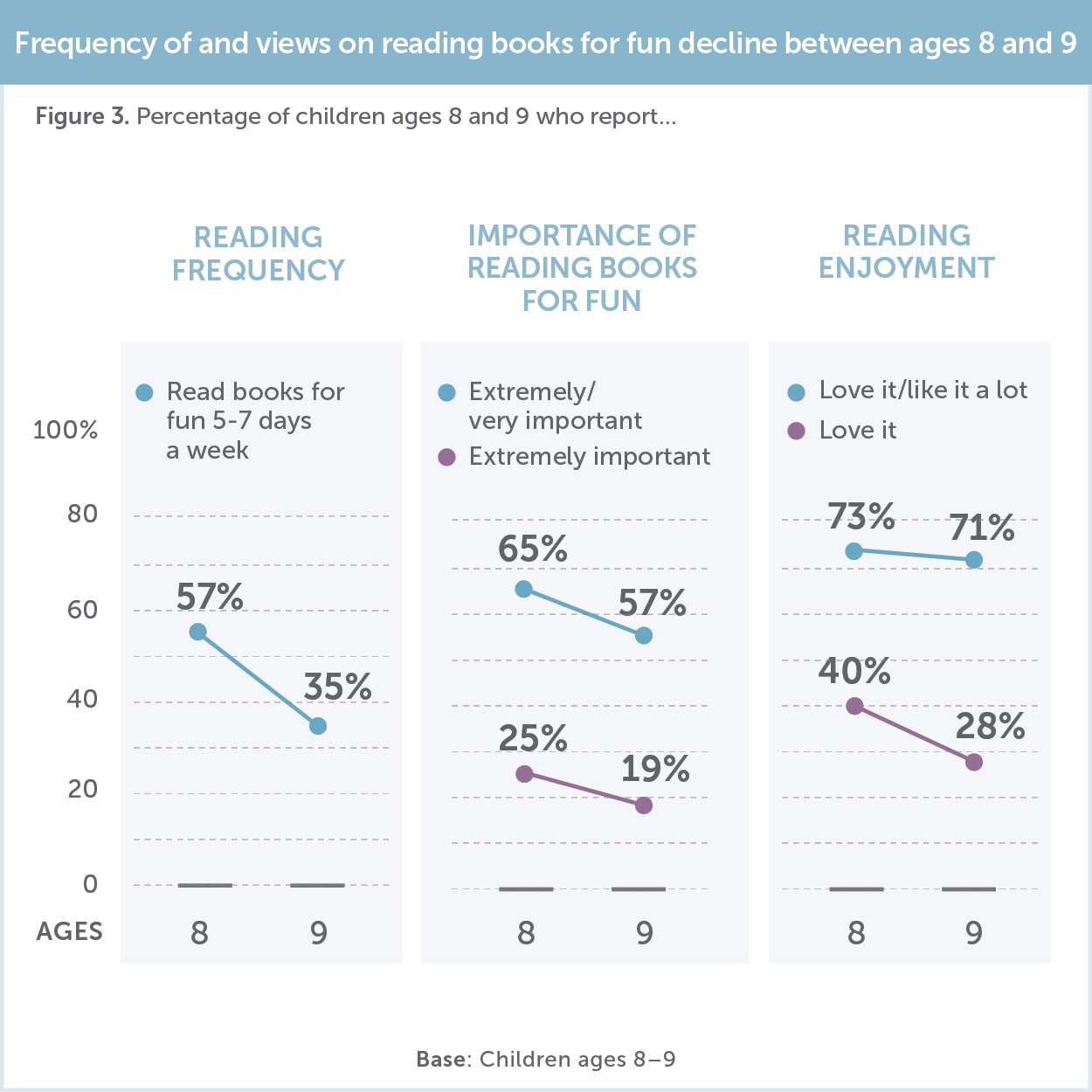
THE "DECLINE BY NINE"
A child turning nine is generally found in a third grade classroom, a critical year in a child’s academic journey. Landmark research by the Annie E. Casey Foundation has previously shown that reaching reading proficiency by third grade is a clear predictor of academic success. And yet the Kids & Family Reading Report finds it is just at that stage that children's frequency of reading books for fun begins to drop: only 35% of nine-year-olds report reading 5–7 days a week compared to 57% of eight-year-olds (see Figure 3).
The Kids & Family Reading Report has shown a child’s attitude towards reading enjoyment and importance is a predictor of reading frequency, which is why it also is striking to note the drop between ages eight and nine in the percentage of kids who think reading books for fun is extremely or very important (from 65% to 57%). Similarly, the number of kids who say they love reading drops significantly from 40% among eight-year-olds to 28% among nine-year-olds (see Figure 3).
What is to be done about the "decline by nine"? Rarely do we see a rebound from these benchmarks as kids grow older. Yet across ages, the majority of kids agree they should read more books for fun, and tell us they believe reading matters. This suggests it is possible to prevent the decline and even to re-engage a child in reading, provided the experience meets their needs and expectations.
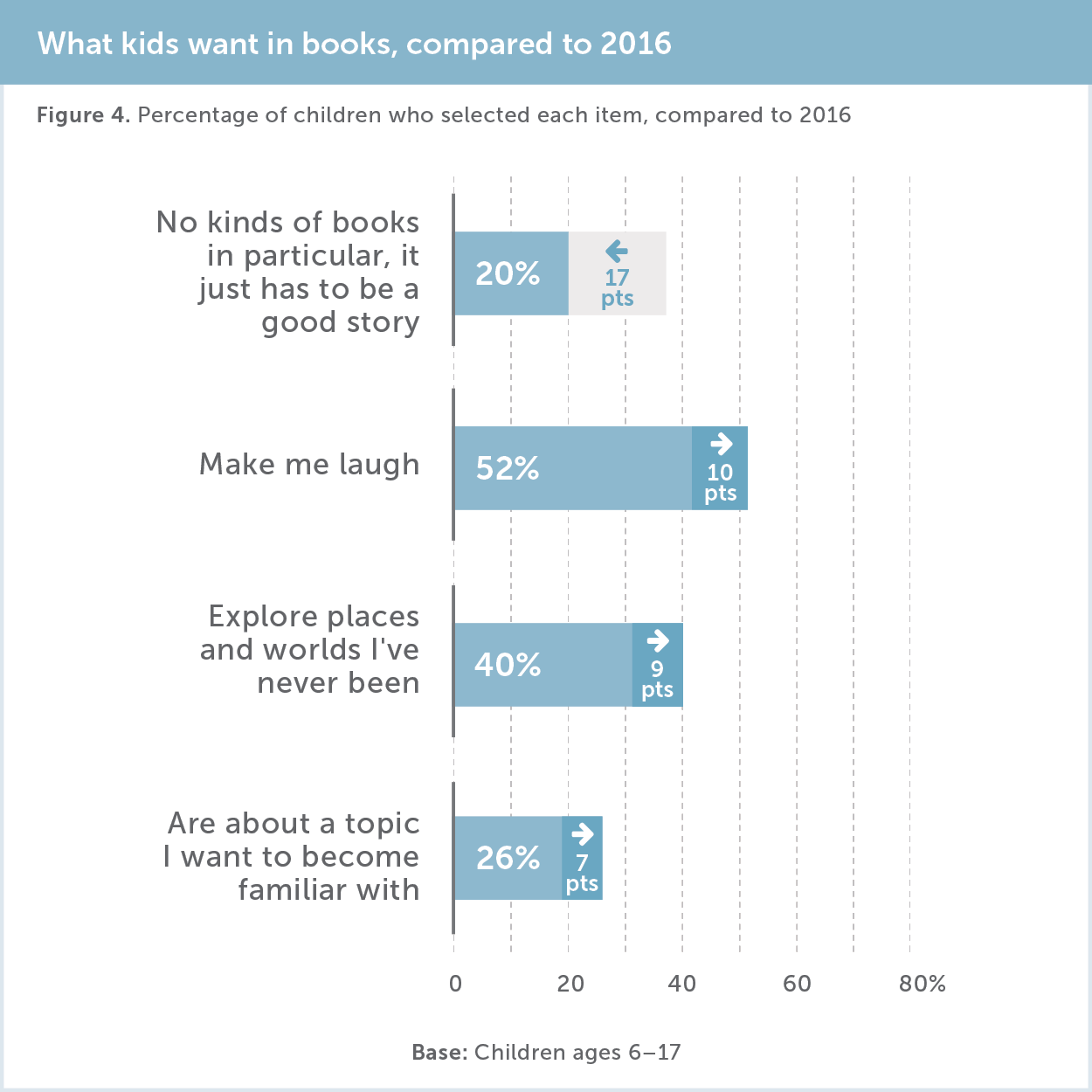
KIDS WANT BOOKS THAT ENTERTAIN, BUT ALSO THOSE THAT HELP THEM MAKE SENSE OF THEIR WORLD
When choosing books to read for fun, many kids want stories that make them laugh. In fact, the desire for funny books increased 10 points since 2016, while the percentage of kids who say the type of book doesn't matter, they just want a good story, is down 17 points.
But funny isn’t everything. Kids also turn to books to connect them to the world at large:
- 40% want books that allow them to explore places and worlds they have never been (up nine points from 2016),
- 26% want books about topics they want to become familiar with (up seven points from 2016),
- 25% want books that help them imagine and understand other people’s lives,
- 25% want books that make them think and feel,
- 23% want books that help them forget about real life for a while,
- 22% want books that inspire them to do something good, and
- 19% want books that are about things they are experiencing
(see Figure 4).
Moderate and frequent readers are by far more opinionated in what they are looking for in books while infrequent readers are the most likely to say they look for no kinds of books in particular, it just has to be a good story. It is also after age eight that we see kids being more likely to want books that inspire them to do something good, understand other people’s lives and learn about topics unfamiliar to them.
"It’s good to learn about different things to help you understand."
—11-year-old boy
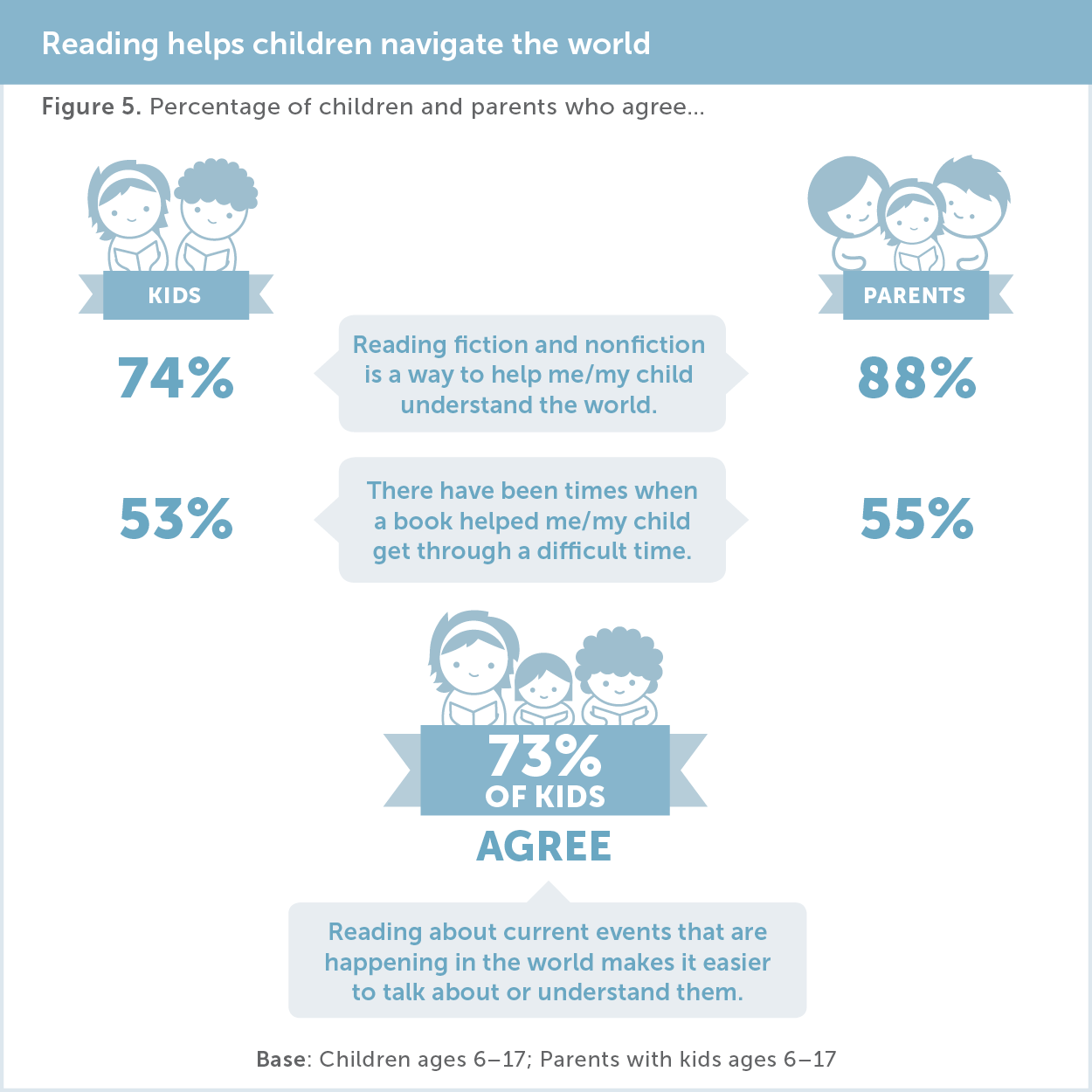
READING HELPS KIDS IRL
Kids agree reading helps them understand broader issues in their communities and beyond, and even helps them through their own personal rough spots. Seventy four percent of children agree that reading fiction and nonfiction is a way to help them understand the world, with a similar percent (73%) agreeing that reading about current events makes it easier to talk about or understand them. One 11-year-old boy told us, “It’s good to learn about different things to help you understand.” Just over half of kids (53%) also agree a book has helped them through a difficult time, and it’s heartening to see that nearly the same percentage of parents (55%) feel books have played this role for their child (see Figure 5).
"I like when I can identify with the experiences
and feelings [characters] are facing."
—15-year-old girl
Click Here For High-Resolution Image
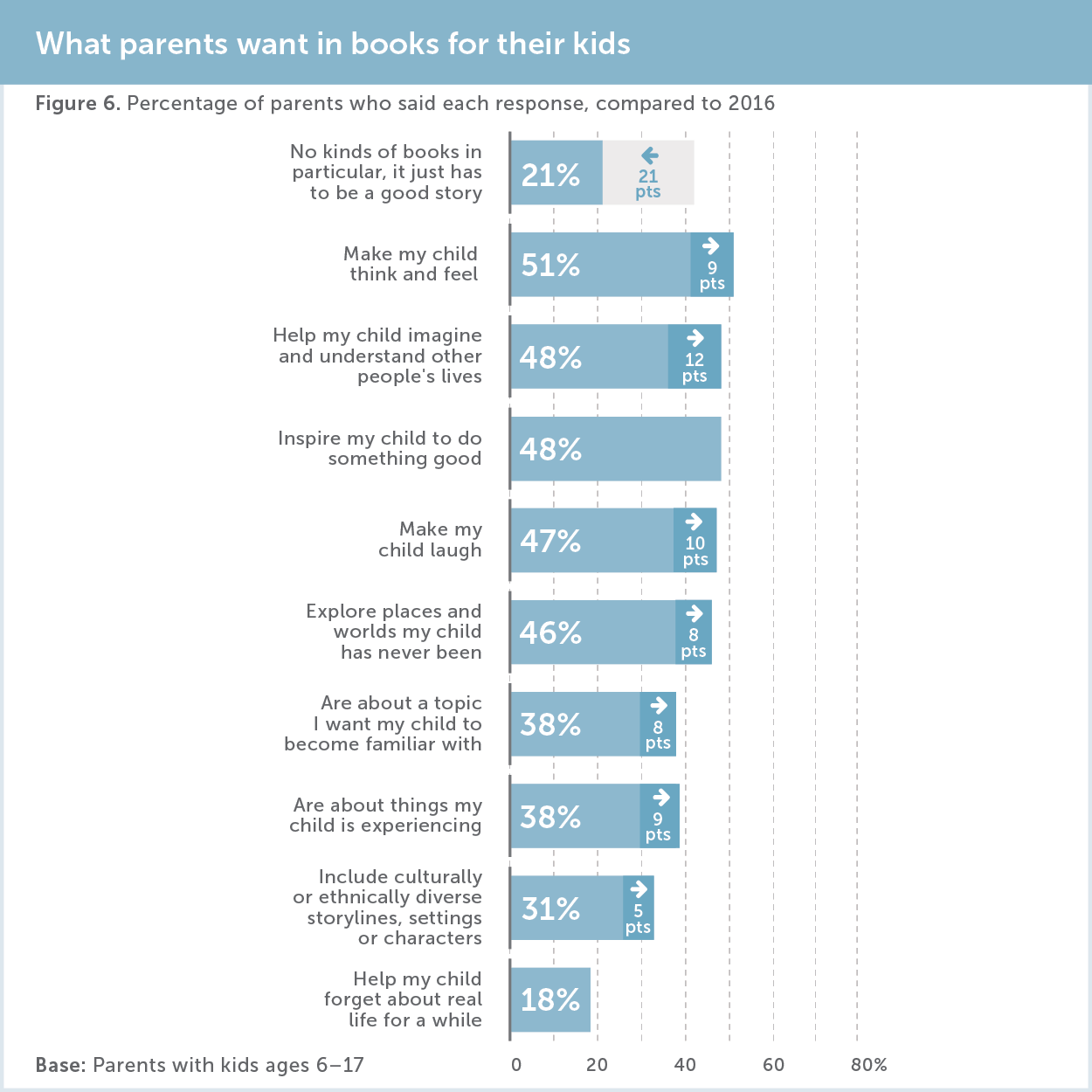
PARENTS SEE THAT BOOKS CAN HELP CHILDREN NAVIGATE THEIR WORLDS
Parents have even stronger views than do their children about the role of books in a child’s life. Over the past two years, in a trend mirrored among the kids surveyed, there has been a steep decline in the number of parents who feel the type of book doesn’t matter, it just has to be a good story (42% to 21%). Children’s book characteristics that parents are now more likely to want include learning about the lives of others (up 12 points to 48%), exploring different places and worlds (up eight points to 46%), and making their child think and feel (up nine points to 51%) (see Figure 6).
"I grew up reading dozens of books and they've all shaped me into the person I am today. I learned about struggles throughout history and what people face day-to-day, learned new words from fiction books that I would have never learned otherwise, and developed a love for adventure through books. I wish the same for my child."
—Mother of a 7-year-old boy
Click Here For High-Resolution Image
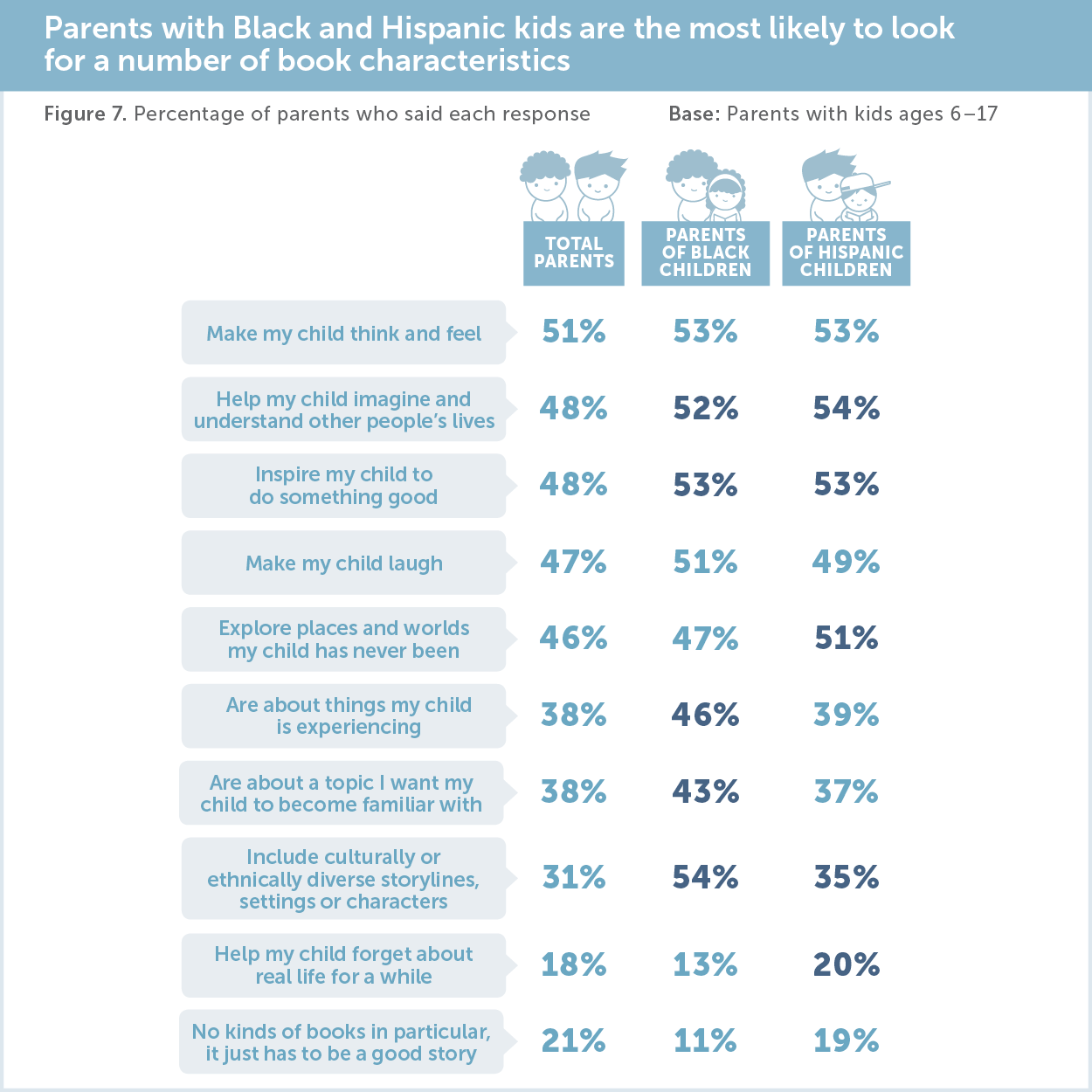
Parents of kids 11 or younger are more likely than parents with older children—by at least 10 points—to look for all of the book characteristics asked about in the survey, save for “help your child forget about real life for a while,” which is consistent across age groups. Parents of Black and Hispanic children are the most likely to look for a number of book characteristics, more than other parents. "Make my child laugh" and "make my child think and feel" are universally wanted by about half of parents across races and ethnicities (see Figure 7).
Additionally, the majority of parents agree that reading fiction and nonfiction is a way for their child to better understand the world (88%), and that reading can help their child understand different points of view (94%).
"Reading for fun spurs the imagination and encourages kids to develop their own thoughts and ask questions. Different books can also help them to learn different things that they might not seek out themselves."
—Father of a 12-year-old boy
Click Here For High-Resolution Image



